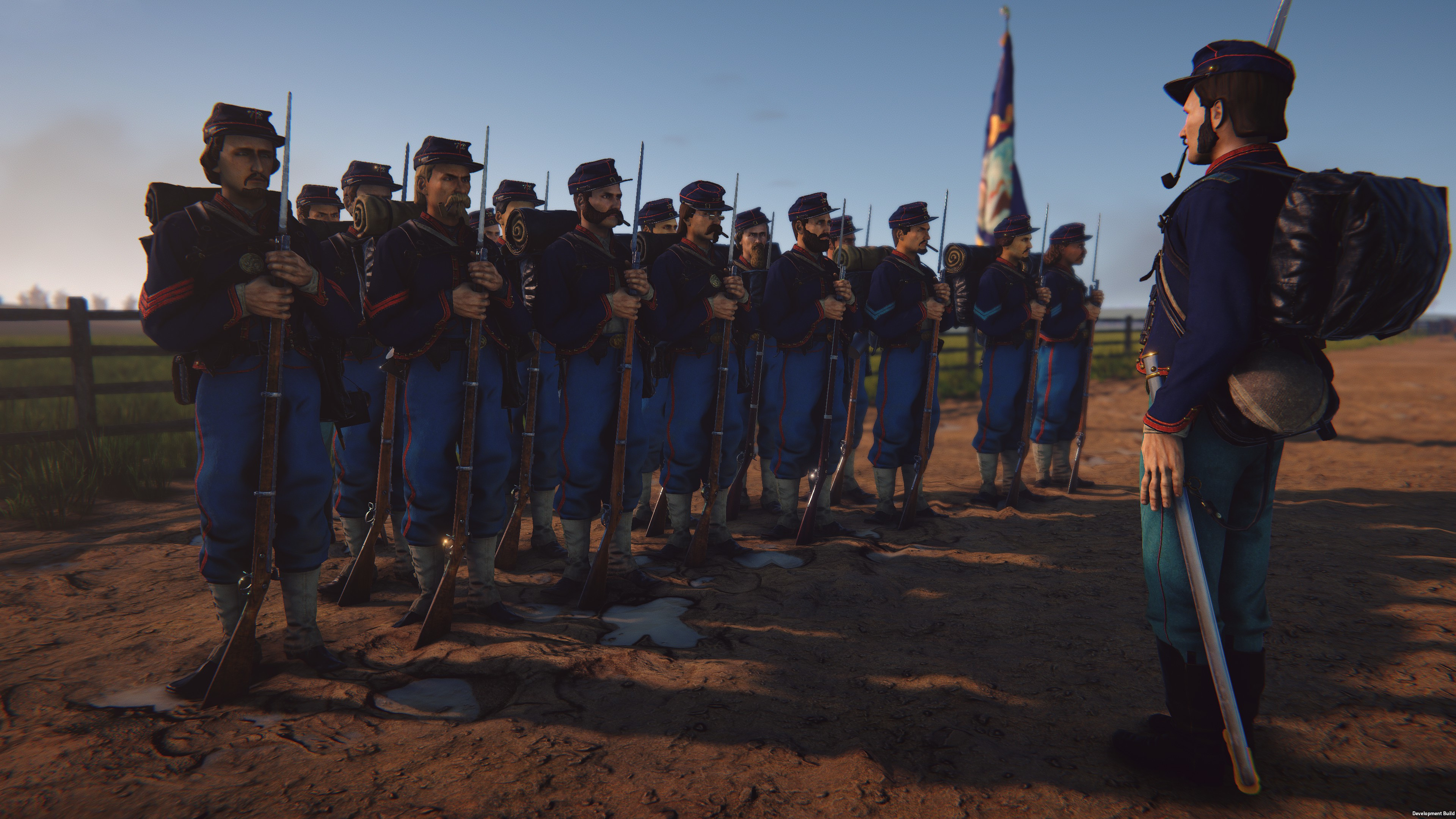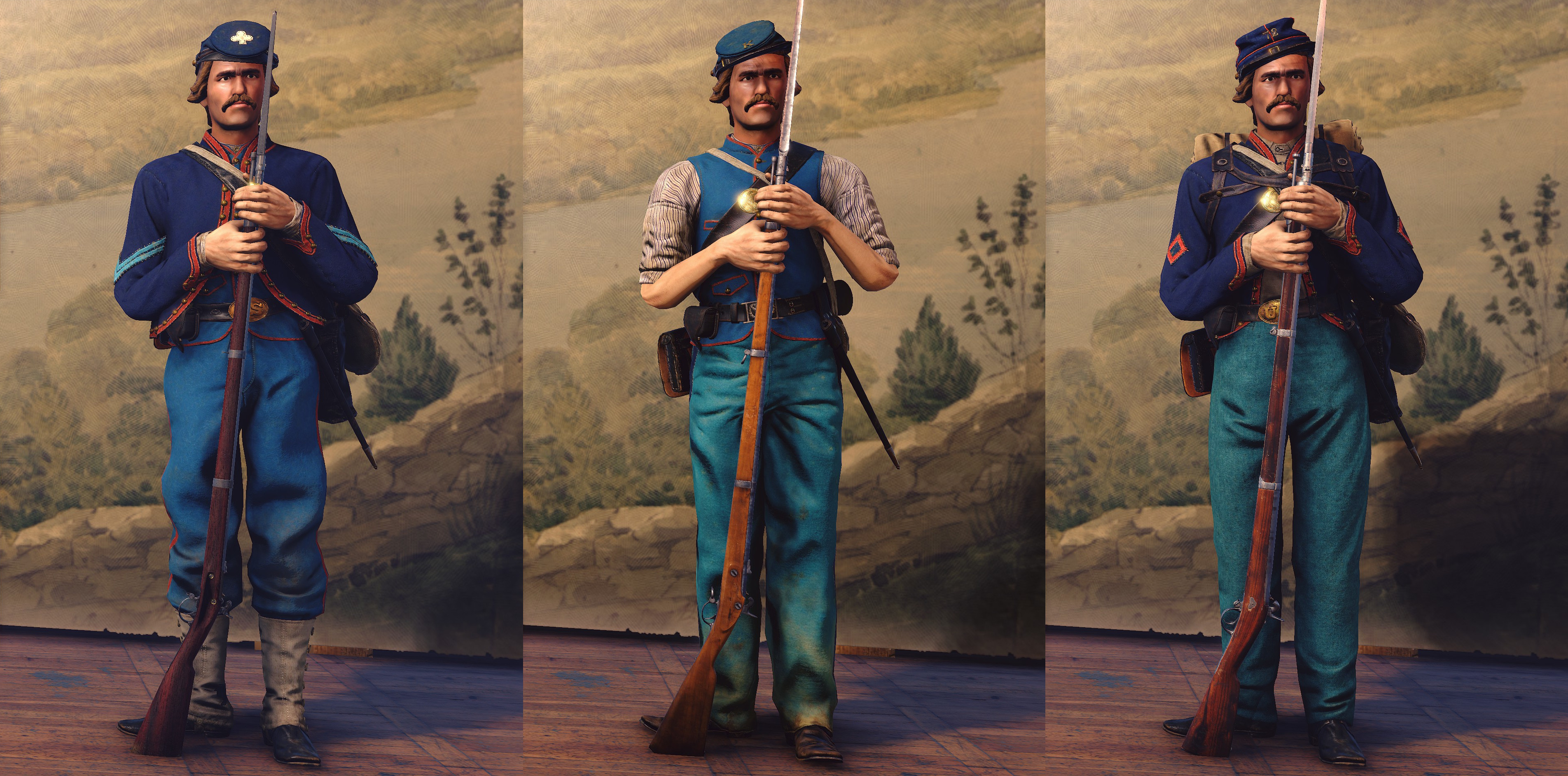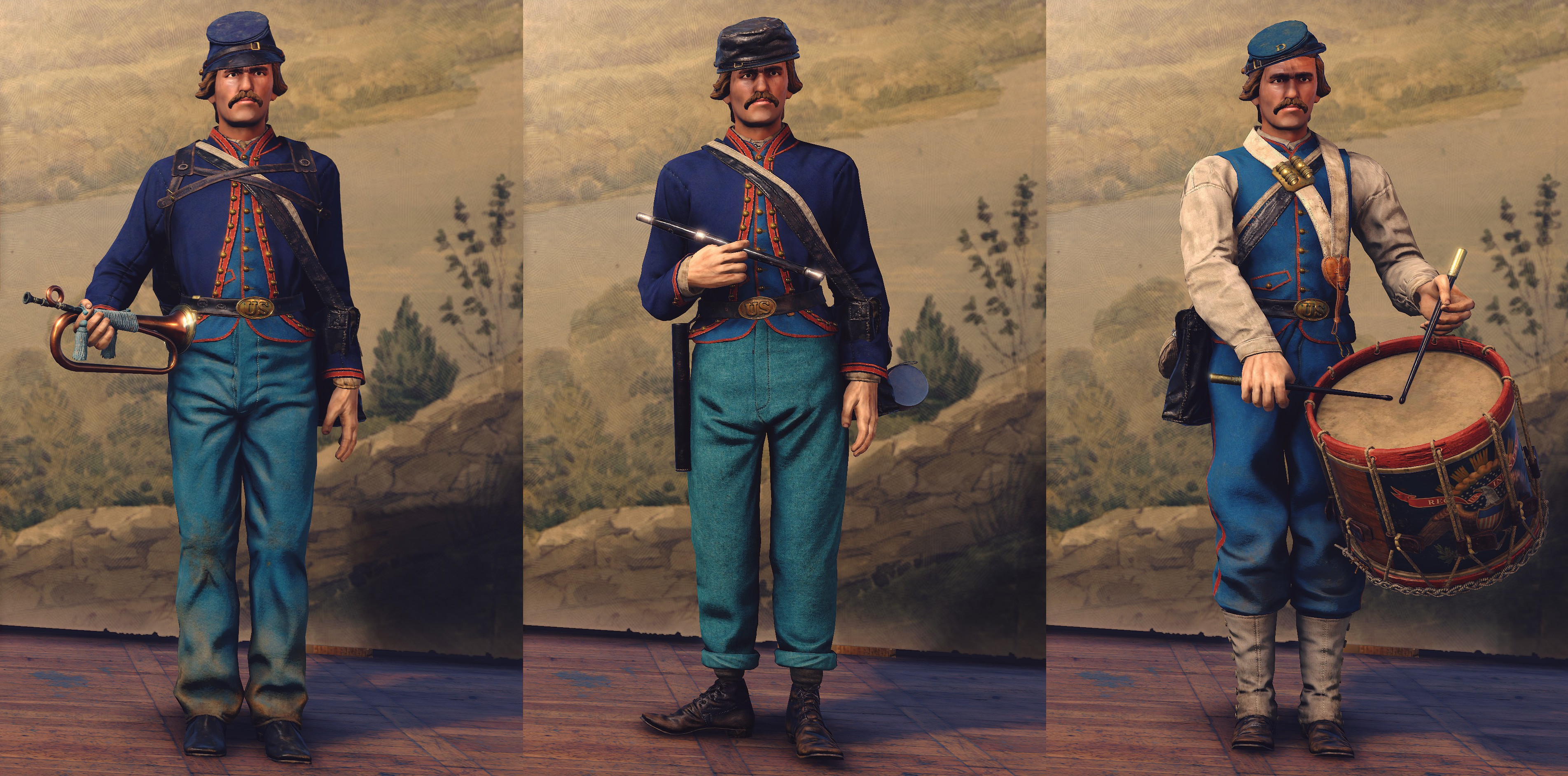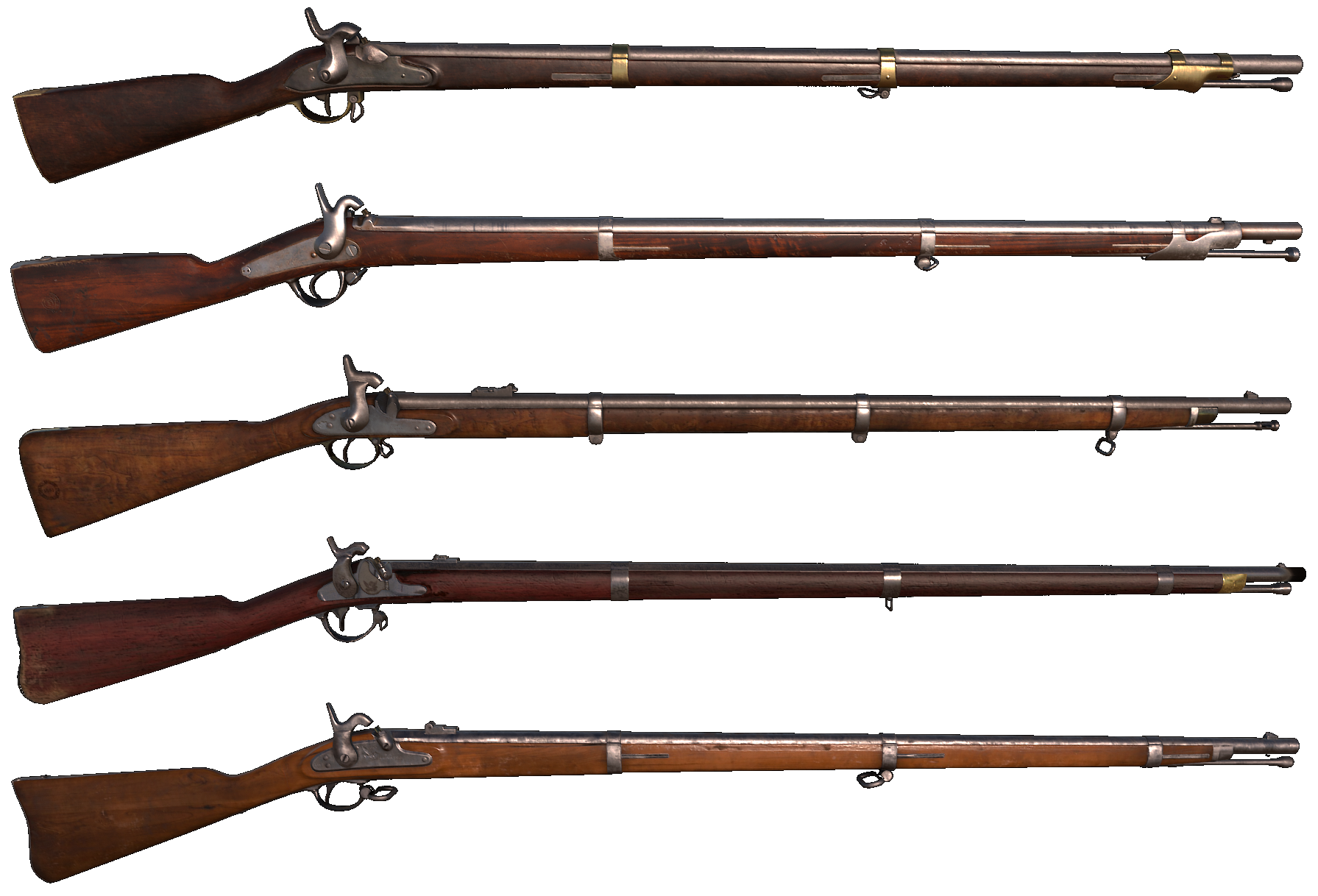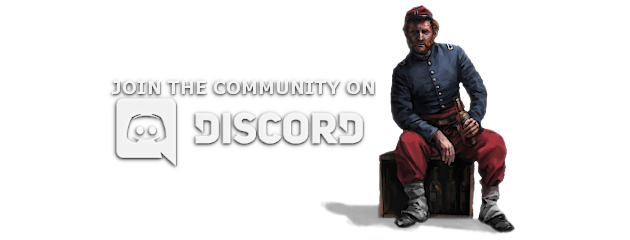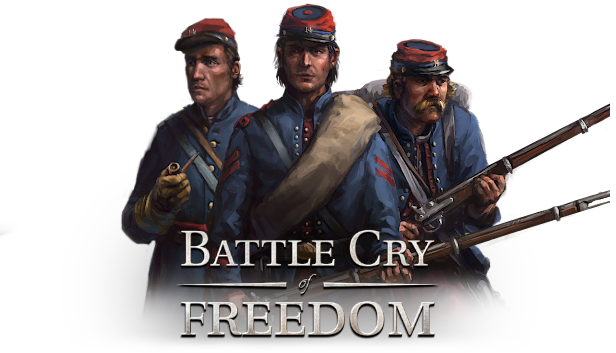
Hello and welcome back to another Developer blog for Battle Cry of Freedom. This week we will introduce you to one of the unique Regiments in Battle Cry of Freedom, the 72nd Pennsylvania Volunteer Infantry Regiment. Most famous for their participation in the Battle of Antietam and Gettysburg, the so-called "Baxter's Fire Zouaves" will also be represented in the game.
The 72nd Pennsylvania Volunteer Infantry Regiment was organized in summer of 1861 by Colonel Clinton Baxter and drew its volunteers mostly from the ranks of the Philadelphia Fire Department. Although raised in Philadelphia, at the start of the war the 72nd PVI went under the name of the Third California Volunteer Infantry Regiment, a special request by the Californian government to credit their participation in the war.
72nd PVI Uniforms
The Baxter's Fire Zouaves wore a modified zouave uniform, complete with vest, kepi, trousers and 6 button cotton-canvas gaiters. Although towards the end of the war, many men were clad with regular Union attire, the 72nd PVI was one of the few regiments to retain their zouave uniform throughout most of the war. This fact is represented in the game, with the 72nd PVI enlisted having the ability to use both zouave and regular union trousers as well as regular forage caps.
On their back the Baxter's Fire Zouaves wore regular double-bag knapsacks. A blanket roll was commonly attached to the top of it. It is not known what type of blanket the 72nd PVI was issued with, as such we have decided to give them access to both emergency and regular Union blankets. Rations and other food were generally carried in the U.S. regulation haversack, which the soldier wears on his side. The 72nd PVI was issued with regular metal canteens, which were covered with cloth in various colors and patterns or simply worn as they were.
Further, the average soldier was equipped with a .58cal cartridge box, usually worn from a shoulder cartridge belt with a round decorative plate affixed. The soldier’s waist belt was decorated with an oval belt buckle made of brass, or in the case of a sergeant, often with a square buckle of more intricate design. Attached to the waistbelt were a cap pouch and a bayonet scabbard.
Officer Uniforms
Being commissioned, officers had more freedom in regards to what and how they wore their equipment. Although the average Union Officer would have likely worn a Federal Officer's Frock Coat, many officers in the 72nd PVI opted to wear their zouave garb instead. Trousers and shoes might have been privately purchased or issued, but there is no telling what the average officer would have worn. As such, officers in the game will be able to pick from a number of trousers, ranging from regular sky or navy blue trousers to zouave trousers with gaiters.
Officers generally would have worn regular 72nd PVI kepis or privately purchased forage caps. Officers would have worn a leather waist belt with a Square plate, and might have attached a pistol holster and cartridge box. Officers likely wore officers' haversacks and a metal or wooden canteen, often with a protective cloth cover.
Weaponry
Supplied by the City of Philadelphia, the 72nd PVI was issued with a number of different guns, with calibers ranging from .58 all the way up to .72. By the time of the civil war, some of the weapons used by the 72nd PVI were more than 50 years old, with the oldest gun being the Model 1809 Potsdam Musket.
Although converted from their original flintlock configuration to percussion, the M1809 Potsdam was neither very accurate nor very light, being one of the longest and heaviest muskets produced. Other guns the 72nd PVI carried included the 1861 Springfield Rifle, the 1855 Springfield Rifle, the 1853 Enfield Rifle, and the Fusil d'Infanterie Modele 1842.
All officers would have been issued with the Model 1850 Army Staff and Field Officers Sword or a privately purchased sword of some kind. Many of them would also have carried a sidearm of some kind, most likely the Colt 1860 and 1848 Army or a number of other, privately purchased or issued revolvers such as the Josyln Army Revolver. (Pictures do not represent all of the available weaponry)
Stay tuned for future updates here or on our Social media, as we have a lot more content coming in the near future. We look forward to seeing you on the battlefield very soon!
Flying Squirrel Entertainment
